Hãy nhập câu hỏi của bạn vào đây, nếu là tài khoản VIP, bạn sẽ được ưu tiên trả lời.

1. A
Phần được gạch chân ở phương án A được phát âm là /s/, các phương án còn lại được phát âm /z/.
2. C
Phần được gạch chân ở phương án C được phát âm là /e/, các phương án còn lại được phát âm /iː/.
3. B
Phần được gạch chân ở phương án B được phát âm là /s/, các phương án còn lại được phát âm /ʃ/.
4. C
Phần được gạch chân ở phương án C được phát âm là /iː/, các phương án còn lại được phát âm /ɪ/.
5. C
Phần được gạch chân ở phương án C được phát âm là /t/, các phương án còn lại được phát âm /d/.

Conversation 1
(Bài đối thoại 1)
A: How often do you watch TV?
(Bạn xem TV bao lâu một lần?)
B: Not very often. Two or three times a week.
(Không thường xuyên lắm. Hai hoặc ba lần một tuần.)
A: What do you watch?
(Bạn xem gì?)
B: It depends. But I like talent shows the most.
(Còn tùy. Nhưng mình thích chương trình tìm kiếm tài năng nhất.)
Conversation 2
(Bài đối thoại 2)
A: Who do you like the most in Doraemon?
(Bạn thích ai nhất trong Doraemon?)
B: Nobita. He's so funny.
(Nobita. Bạn ấy thật hài hước.)

Match the verbs in column A to the words or phrases in column B. Then listen, check and repeat them.
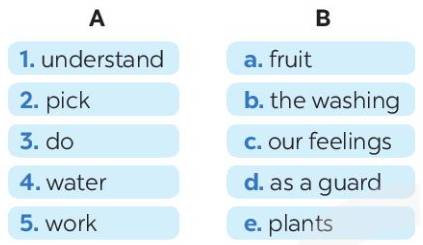

1 - c: understand our feelings (hiểu cảm xúc của chúng ta)
2 - a: pick fruit (hái trái cây)
3 - b: do the washing (làm công việc giặt giũ)
4 - e: water plants (tưới cây)
5 - d: work as a guard (làm việc như bảo vệ)

What Vy likes (Điều Vy thích) - many shops, restaurants, and art gallery in her neighbourhood (nhiều cửa hàng, nhà hàng và triển lãm nghệ thuật trong xóm) - wide streets (đường phố rộng rãi) - helpful and friendly people (con người hay giúp đỡ và thân thiện) |
What Vy dislikes (Điều Vy không thích) - too far away school (quá xa trường học) - dirty air (không khí ô nhiễm) - noisy and crowded streets (đường phố ồn ào và đông đúc) |

Phu Quoc island is a part of Kien Giang province. It is the largest island of Vietnam, with a total acreage of 574 square kilometers. Besides the charming beaches, this place is also famous for being the largest camp for prisoners of South Vietnam during the Vietnam War.
(Đảo Phú Quốc là một phần của tỉnh Kiên Giang. Đây là hòn đảo lớn nhất của Việt Nam, với tổng diện tích là 574 km vuông. Bên cạnh những bãi biển quyến rũ, nơi đây còn nổi tiếng là trại giam tù binh lớn nhất của miền Nam Việt Nam trong chiến tranh Việt Nam.)
Phu Quoc island is a part of Kien Giang province. It is the largest island of Vietnam, with a total acreage of 574 square kilometers. Besides the charming beaches, this place is also famous for being the largest camp for prisoners of South Vietnam during the Vietnam War.
(Đảo Phú Quốc là một phần của tỉnh Kiên Giang. Đây là hòn đảo lớn nhất của Việt Nam, với tổng diện tích là 574 km vuông. Bên cạnh những bãi biển quyến rũ, nơi đây còn nổi tiếng là trại giam tù binh lớn nhất của miền Nam Việt Nam trong chiến tranh Việt Nam.)

/əʊ/ | /aʊ/ |
boat /bəʊt/ | house /haʊs/ |
postcard /ˈpəʊstkɑːd/ | town /taʊn/ |
coast /kəʊst/ | crowded /ˈkraʊdɪd/ |
pagoda /pəˈɡəʊdə/ | tower /ˈtaʊə(r)/ |



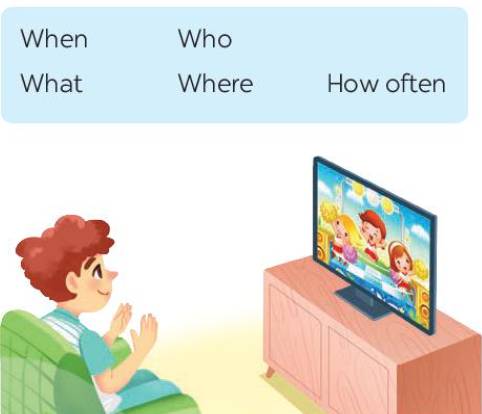
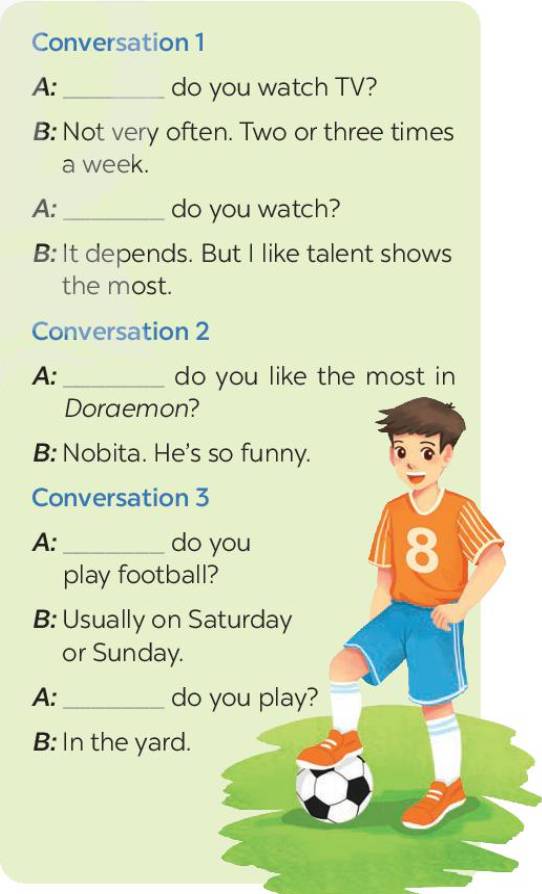
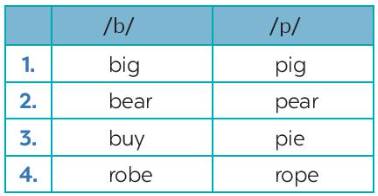
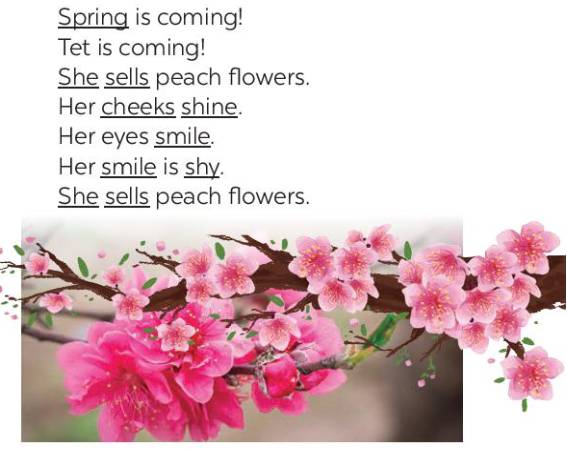
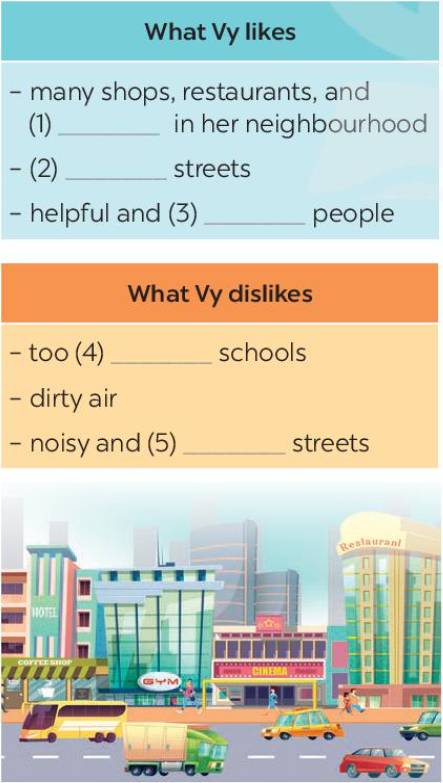

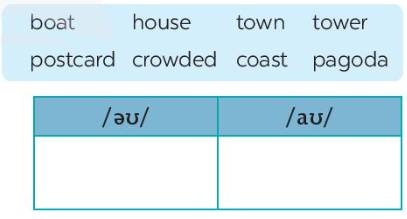

1C
2A
3A
4C
5B
1. C
Phần được gạch chân ở phương án C được phát âm là /əʊ/, các phương án còn lại được phát âm /aʊ/.
2. A
Phần được gạch chân ở phương án A được phát âm là /ə/, các phương án còn lại được phát âm /əʊ/.
3. A
Phần được gạch chân ở phương án A được phát âm là /ð/, các phương án còn lại được phát âm /θ/.
4. C
Phần được gạch chân ở phương án C được phát âm là /e/, các phương án còn lại được phát âm /æ/.
5. B
Phần được gạch chân ở phương án B được phát âm là /ɪ/, các phương án còn lại được phát âm /e/.